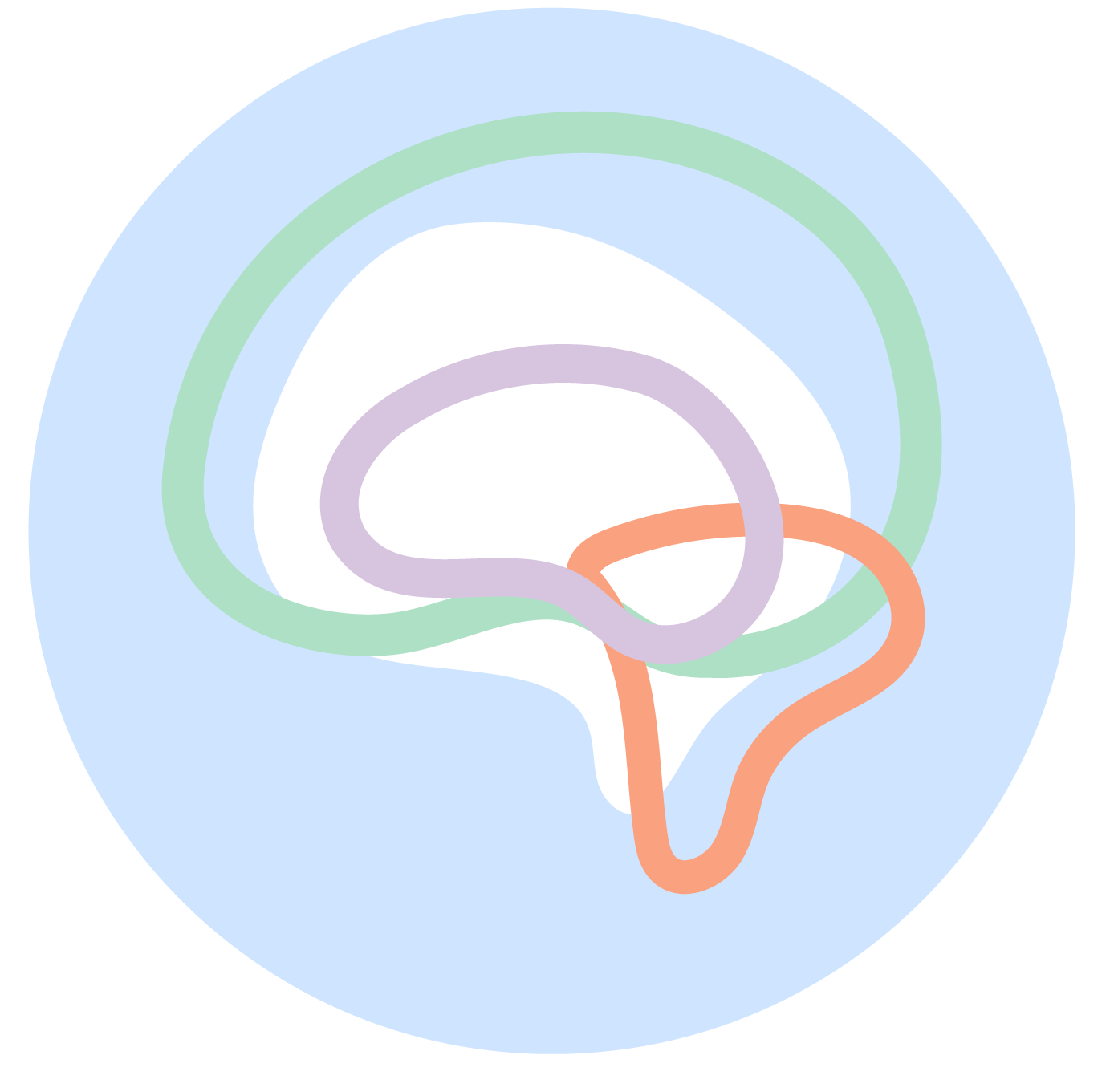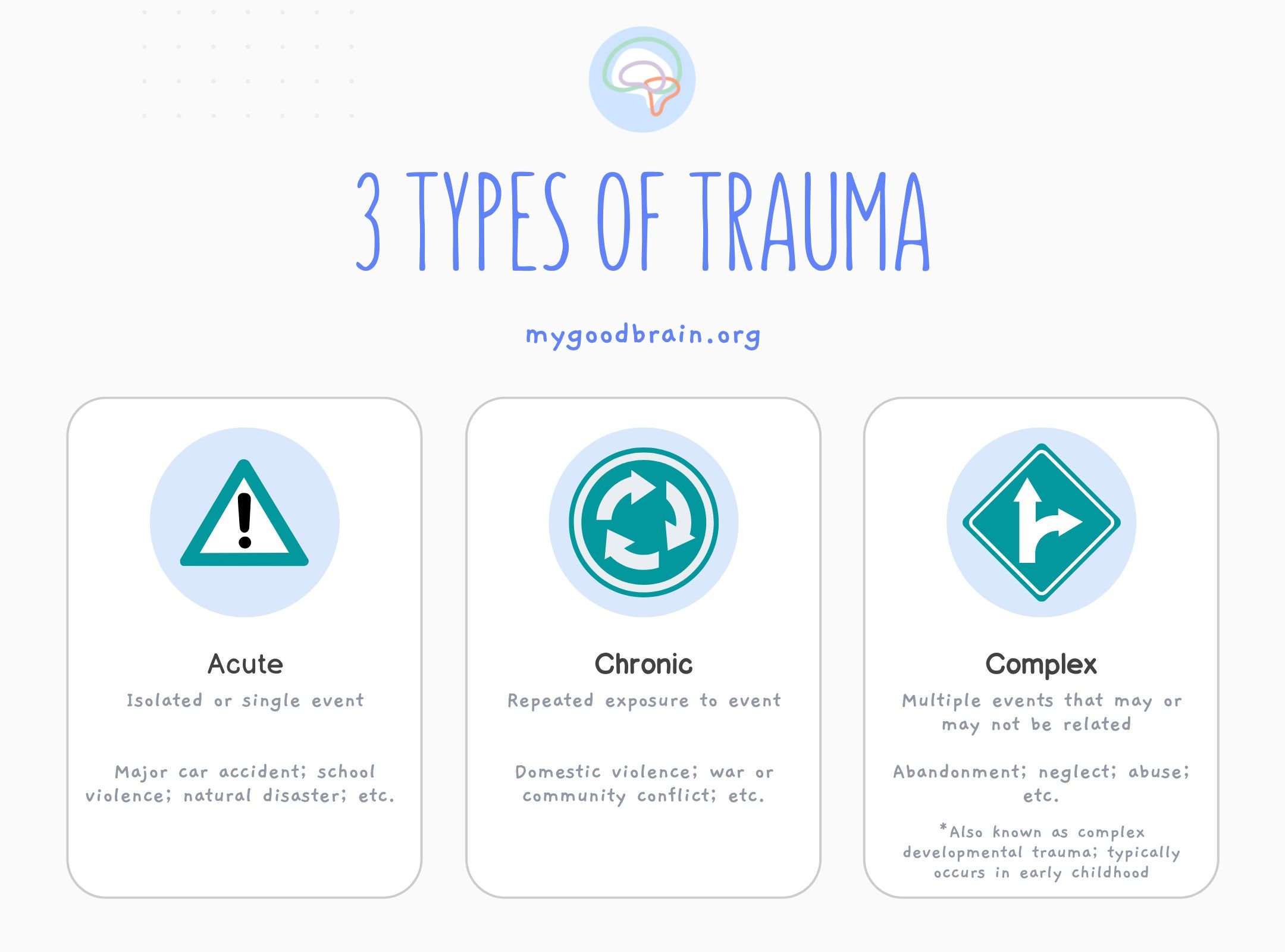Understanding Trauma
Trauma is a reflection of what is happening in the body.
Trauma is an emotional response to an activating or intense event that threatens or causes real or perceived harm. Natural disasters, injury or accidents, loss or separation, bullying, etc. can all be potentially traumatic events. Trauma is not the event itself, but how we respond to and process it over time - and it’s different for all of us.
Trauma affects our bodies (how we feel), our brains (how we think), and our behavior (how we act). Understanding what trauma is and how it impacts each person differently is key to responding to and supporting those affected by trauma and preventing future retraumatization.
There are three main types of trauma: acute, chronic, and complex.
Acute trauma is brought on by a single or isolated event. Examples might include a serious accident or injury, experiencing a natural disaster such as a hurricane or wildfire, being the victim of a crime, etc.
Chronic trauma is brought on by repeated or prolonged exposure to a patterned event such as domestic violence in the home, war or ongoing threat of conflict, etc.
Complex trauma is brought on by repeated exposure to multiple events, often invasive in nature. Examples might include abuse or neglect, abandonment, etc. Complex trauma is also known as chronic developmental trauma as it typically occurs in early childhood.
Another way to understand the different types of trauma is by thinking of big ‘T’ trauma and little ‘t’ trauma. Big ‘T’ trauma is typically associated with a life-threatening event such as a school shooting, natural disaster, or major car accident. Little ‘t’ trauma is typically associated with events that cause significant distress such as experiencing bullying, losing a job, or loss of a loved one. It’s important to remember that lived experience plays a role in understanding how the body responds to and processes trauma. Because events can have varying impacts on an individual, the level of trauma one might cause looks different for everyone.
Traumatic events that occur in early childhood are also known as Adverse Childhood Experiences or ACE’s.
ACEs are defined by the Centers for Disease Control and Prevention (CDC) as potentially traumatic events experienced during childhood (ages 0-17). These experiences have been linked to chronic health problems, mental health conditions, and more in adolescence and adulthood.
While ACEs are related to trauma - they are not exactly the same. ACEs encompass a variety of adverse (negative or harmful) experiences throughout childhood, whereas trauma is just one outcome of adversity and refers to how a child perceives and responds to those experiences.
Regardless of the type, trauma has a significant and long-lasting impact on the mind and body. Knowing the signs and symptoms of trauma is the first step in preventing retraumatization and ensuring individuals feel safe and supported.
Symptoms of trauma are both psychological and physical and can include:
Changes in behavior, attitude, and worldview
Intense fear or shame
Changes in memory and concentration
Social withdrawal and avoidance
Loss of interest in activities that are normally enjoyed or challenges with activities of daily living (e.g., brushing teeth, showering, eating, etc.)
Difficulty sleeping and nightmares
Startled easily or excessively on alert
Increased anxiety and depression
Substance misuse and other risky behaviors
For some, trauma can result in what is known as post-traumatic stress disorder (PTSD). PTSD is defined by the American Psychological Association as a disorder in which people relive the trauma they have experienced through painful recollections, flashbacks, recurring dreams, or nightmares.
What can you do to support others through trauma?
Seeing a friend or family member experience trauma can be hard and it can sometimes feel like there is nothing you can do. The truth is - there are many ways you can support someone through trauma and it all depends on what that person’s needs are at the time.
Familiarize yourself with the causes and effects of trauma. Create space to learn about the different types of trauma, how these events might impact people differently, and get to know the symptoms of trauma. Doing so helps to prevent retraumatization or accidental further harm.
Listen. Each person’s story is different. Practice active listening when they are seeking out a listening ear and avoid comparing to others’ stories or situations. Never force someone to tell their story. If they do share, reflect back feeling and affirm their experience regardless if it looks different from yours or anothers’.
Offer general support. Sometimes help with daily tasks can go a long way. Helping them run errands, helping around the house, or even just spending time doing an activity they love can help them gain a sense of accomplishment and control when it may feel otherwise.
Balance presence with privacy. Even when someone wants to be surrounded by loved ones, they also need their own space to process, grieve, etc. Check-in with them about their needs and honor requests for privacy when they need it.
Find resources in the community. Ensure they have access to resources such as crisis support lines, places to access therapy or support groups, and sometimes resources such as meal delivery services, community support, etc. These resources may not always be needed or used, but having them accessible helps to alleviate some of the burden of day-to-day tasks or doing the research to locate.
Take care of yourself. We can’t pour from an empty cup. Check-in with how you’re feeling and honor the need to reset and reset. The more you take care of yourself the better you can show up for others.
Visit our resource page to find a collection of resources from partners in the field on trauma and adverse childhood experiences (ACEs).




